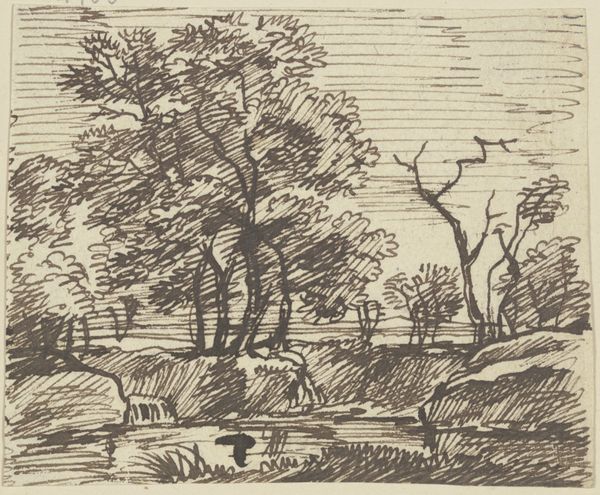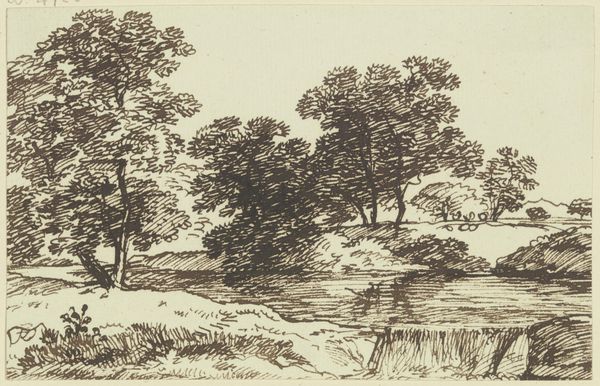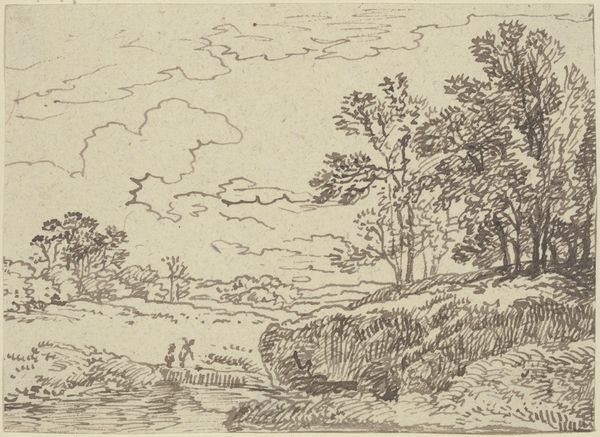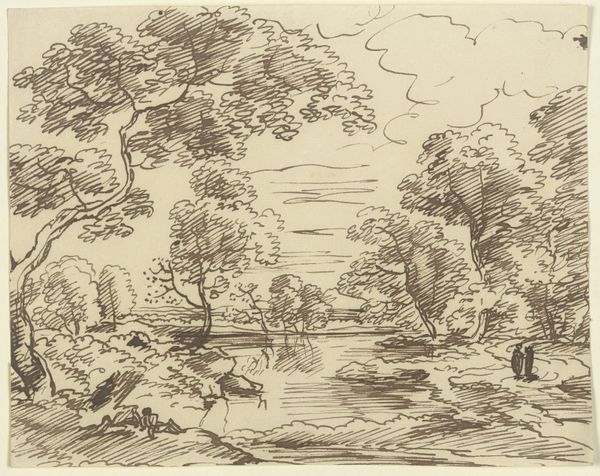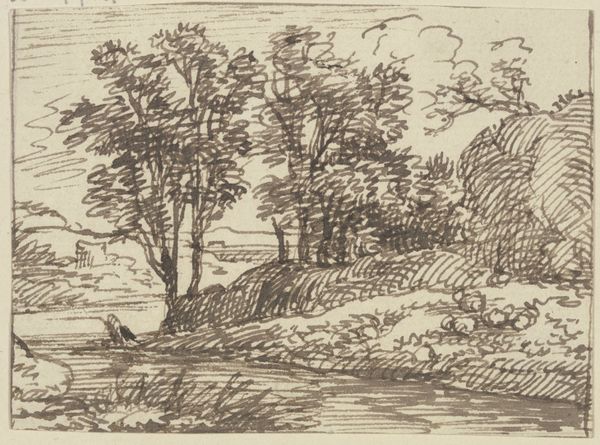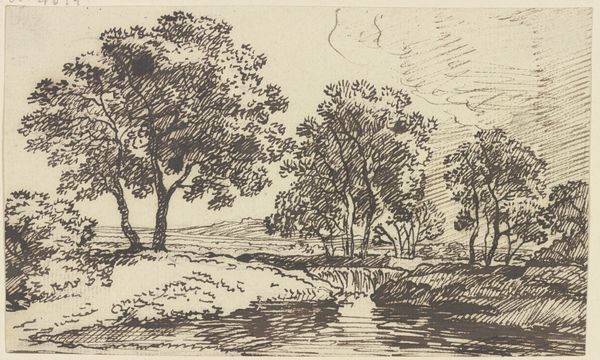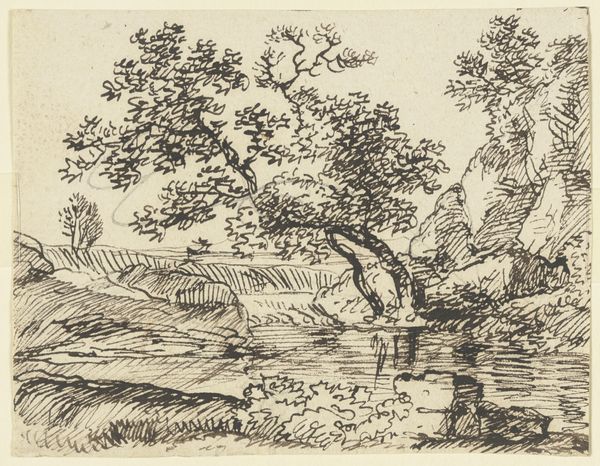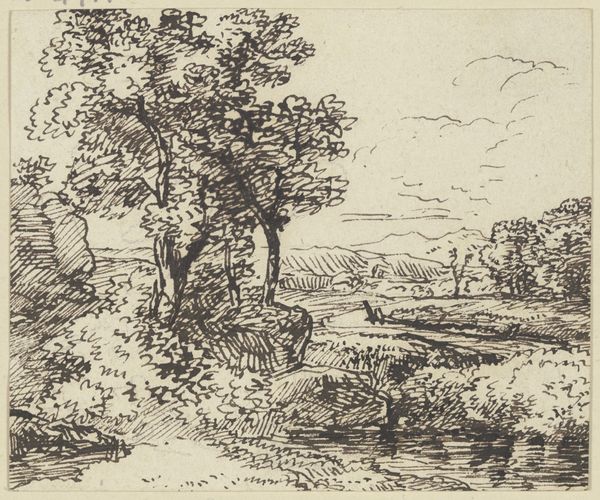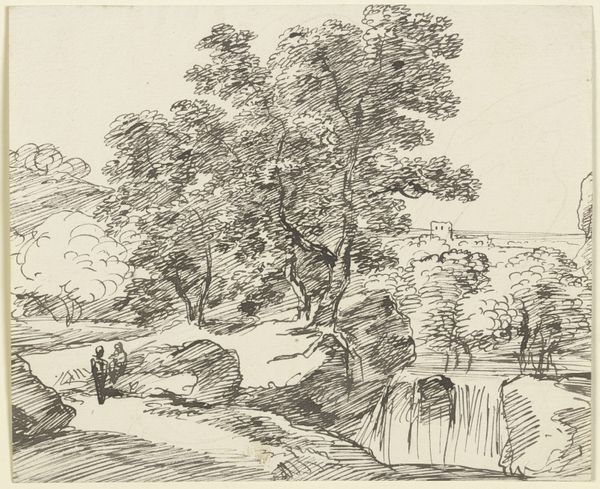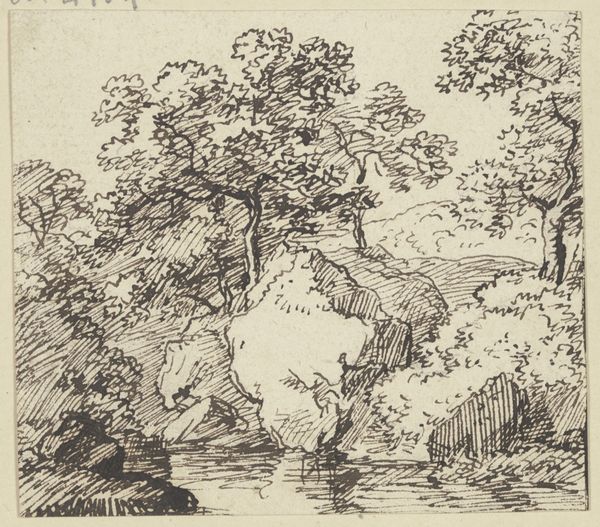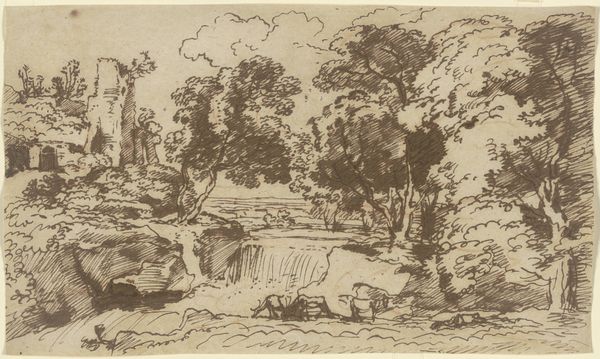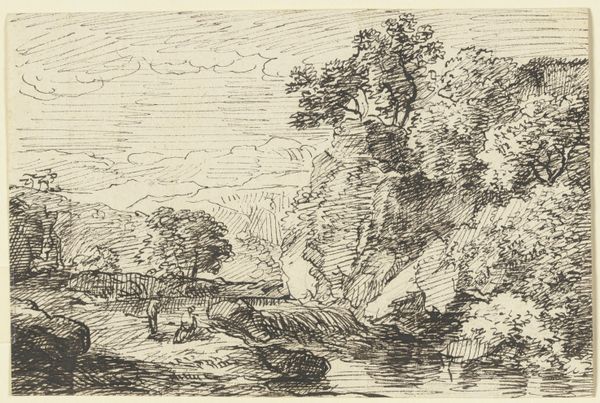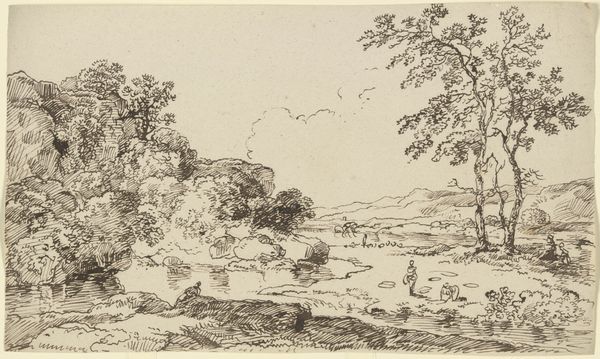
drawing, ink
#
drawing
#
landscape
#
ink
#
sketch
Copyright: Public Domain
Editor: We're looking at "Trees at the Stream" by Franz Kobell, an ink drawing. The textures created by the hatching are captivating; the rocks especially appear rough to the touch. How might we interpret this work through its materiality and making? Curator: Focusing on the medium itself, the choice of ink for a landscape sketch like this invites exploration into the economic and social conditions surrounding art production. Was ink readily available, making it an accessible medium? Did its portability allow the artist to capture landscapes quickly, perhaps for later, more elaborate, commissions? The efficiency of the marks! Each line is a decision, seemingly quick, yet building a very stable, understandable representation of place. Editor: So, it's not just about *what* is depicted but *how* it’s depicted and why that medium was chosen. Was drawing valued differently than, say, painting, in Kobell’s time? Curator: Precisely. Think about the social hierarchies of art materials. Were drawings viewed as preparatory – subservient to the "high art" of painting – or were they gaining recognition as independent artworks worthy of collection and display? This impacts the labor invested and the value assigned. Editor: I never really considered the value attached to the material itself. It is interesting to reflect on what something as ubiquitous as 'ink' tells us. Curator: And consider the paper – its quality, its size. These details illuminate the context of production and reception. Analyzing these physical attributes helps us unpack the power structures embedded in artmaking. Editor: This definitely provides a whole new way to appreciate and analyse drawings. Thanks! Curator: Indeed. Seeing the materials as active participants in creating meaning changes everything.
Comments
No comments
Be the first to comment and join the conversation on the ultimate creative platform.

